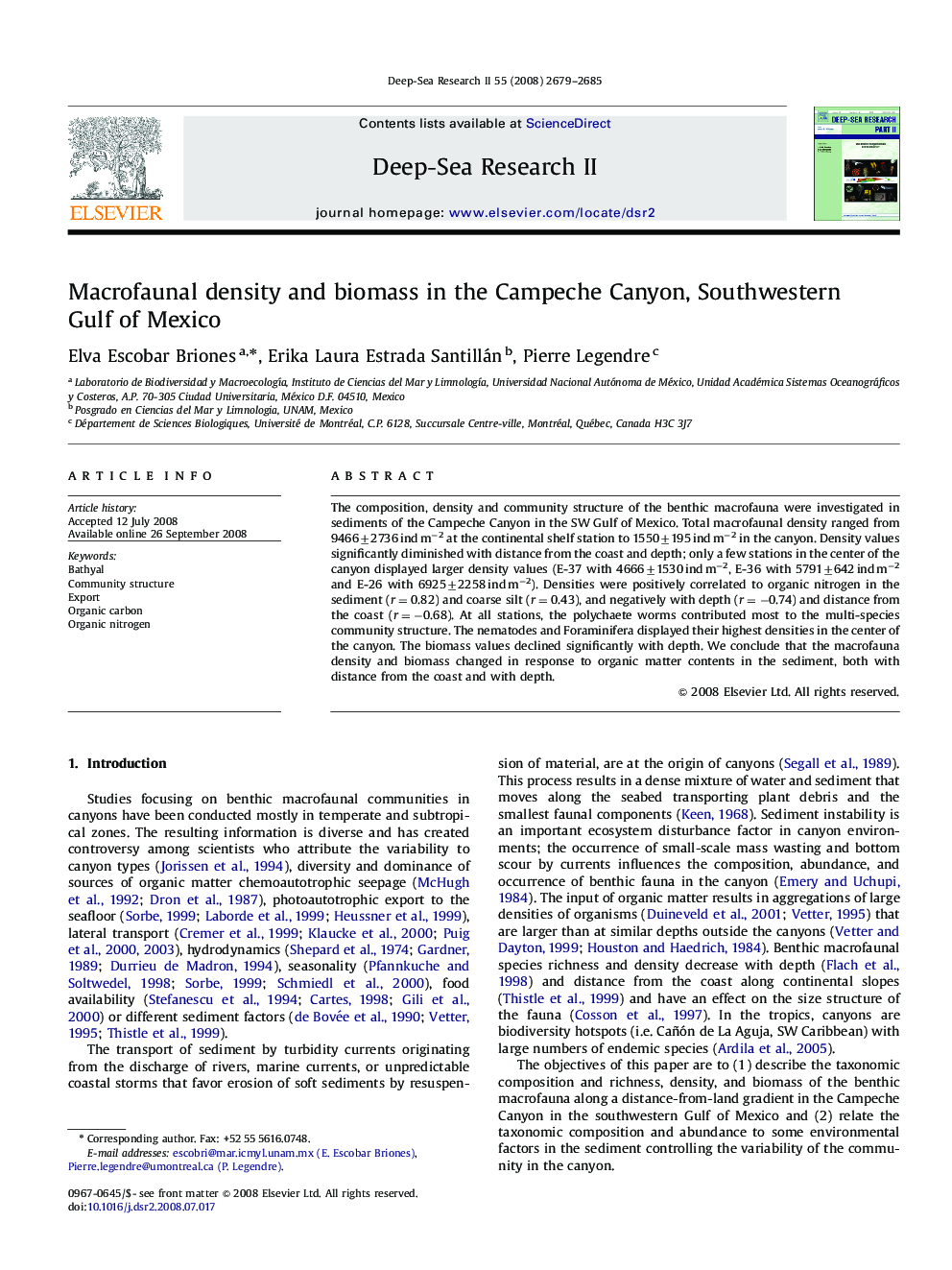| کد مقاله | کد نشریه | سال انتشار | مقاله انگلیسی | نسخه تمام متن |
|---|---|---|---|---|
| 4537150 | 1626489 | 2008 | 7 صفحه PDF | دانلود رایگان |

The composition, density and community structure of the benthic macrofauna were investigated in sediments of the Campeche Canyon in the SW Gulf of Mexico. Total macrofaunal density ranged from 9466±2736 ind m−2 at the continental shelf station to 1550±195 ind m−2 in the canyon. Density values significantly diminished with distance from the coast and depth; only a few stations in the center of the canyon displayed larger density values (E-37 with 4666±1530 ind m−2, E-36 with 5791±642 ind m−2 and E-26 with 6925±2258 ind m−2). Densities were positively correlated to organic nitrogen in the sediment (r=0.82) and coarse silt (r=0.43), and negatively with depth (r=−0.74) and distance from the coast (r=−0.68). At all stations, the polychaete worms contributed most to the multi-species community structure. The nematodes and Foraminifera displayed their highest densities in the center of the canyon. The biomass values declined significantly with depth. We conclude that the macrofauna density and biomass changed in response to organic matter contents in the sediment, both with distance from the coast and with depth.
Journal: Deep Sea Research Part II: Topical Studies in Oceanography - Volume 55, Issues 24–26, December 2008, Pages 2679–2685